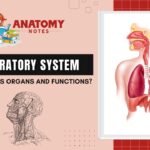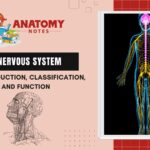Human Reproductive System is made up of the external and internal organs of both males and females and works together for reproduction.
The reproductive system is the most important system in our body because it plays an important role in the survival of species.
The growth and activity of these parts are regulated by hormones. The reproductive system is worked with other organ systems, particularly the endocrine system and urinary system.
The main function of the Human Reproductive system is gamete formation. The fusion of male and female gametes results in offspring which grow and develop further inside the female body.
Formation Of Gametes
A gamete is the male or female reproductive cell that contains half the genetic material of the organism.
When two human gametes meet i.e. a sperm cell and an ovum then a zygote formation takes place which is also known as a fertilized egg.
Gametes are produced by the cell division which is called meiosis. Gamete formation takes place in these sequences of steps, replicated DNA in a parent cell is distributed among four cells.
Meiosis produces gametes that are considered as the haploid cells. Human sex cells contain 23 chromosomes.
When fertilization takes place then two haploid cells fused together and form a diploid cell that contains 46 chromosomes.
Spermatogenesis
The production of sperm cells is known as spermatogenesis.
Stem cells develop into mature sperm cells by first dividing mitotically to produce identical copies of themselves and then meiotically to create unique daughter cells called spermatids.
Spermatids then transform into mature spermatozoa through spermiogenesis. This process occurs continuously and takes place within the male testes.
Hundreds of millions of sperm must be released in order for fertilization to take place.
Also Read: Respiratory System – Introduction, Parts & Functions
https://anatomynotes.org/basic-anatomy/respiratory-system-introduction-parts-functions/
Oogenesis
Oogenesis (ovum development) occurs in the female ovaries. In meiosis, I of oogenesis, daughter cells divide asymmetrically.
This asymmetrical cytokinesis results in one large egg cell (oocyte) and smaller cells called polar bodies.
The polar bodies degrade and are not fertilized. After meiosis It is complete, the egg cell is called a secondary oocyte.
The haploid secondary oocyte will only complete the second meiotic stage if it encounters a sperm cell. Once fertilization is initiated, the secondary oocyte completes meiosis II and becomes an ovum.
The ovum fuses with the sperm cell and fertilization complete while embryonic development begins. A fertilized ovum is called a zygote.
Reproductive Organs
Both male and female reproductive systems have internal and external structures. Reproductive organs are considered to be either primary or secondary organs based on their role.
The primary reproductive organs of either system are called gonads (ovaries and testes) and these are responsible for gamete (sperm and egg cell) and hormone production.
Other reproductive structures and organs are considered secondary reproductive structures and they aid in the growth and maturation of gametes and offspring.
Female Reproductive System
The female reproductive system is comprised of both internal and external reproductive organs that both enable fertilization and support embryonic development.
Also Read:Lymphatic system – Organs associated and functions of lymphatic system
Lymphatic system – Organs associated and functions of lymphatic system
Structures of the female reproductive system include:
- Labia majora: Larger lip-like external structures that cover and protect other reproductive structures.
- Labia minora: Smaller lip-like external structures found inside the labia majora. They provide protection to the clitoris, urethra, and vaginal openings.
- Clitoris: Sensitive sexual organ located in the uppermost section of the vaginal opening. The clitoris contains thousands of sensory nerve endings that respond to sexual stimulation and promote vaginal lubrication.
- Vagina: Fibrous, muscular canal leading from the cervix to the external portion of the genital canal. The penis enters the vagina during sexual intercourse.
- Cervix: Opening of the uterus. This strong, narrow structure expands to allow sperm to flow from the vagina into the uterus.
- Uterus: Internal organ that houses and nurtures female gametes after fertilization, commonly called the womb. A placenta, which encases a growing embryo, develops and attaches itself to the uterine wall during pregnancy. An umbilical cord stretches from the fetus to its placenta to provide nutrients from a mother to an unborn baby.
- Fallopian tubes: Uterine tubes that transport egg cells from the ovaries to the uterus. Fertile eggs are released from ovaries into fallopian tubes during ovulation and typically fertilized from there.
- Ovaries: Primary reproductive structures that produce female gametes (eggs) and sex hormones. There is one ovary on either side of the uterus.
Male Reproductive System
The male reproductive system consists of sexual organs, accessory glands, and a series of duct systems that provide a pathway for sperm cells to exit the body and fertilize an egg.
Male genitalia only equips an organism to initiate fertilization and does not support the development of a growing fetus.
Structures of the male reproductive system include:
- Penis: The main organ involved in sexual intercourse. This organ is composed of erectile tissue, connective tissue, and skin. The urethra stretches the length of the penis and allows either urine or sperm to pass through its external opening.
- Testes: Male primary reproductive structures that produce male gametes (sperm) and sex hormones. Testes are also called testicles.
- Scrotum: External pouch of skin that contains the testes. Because the scrotum is located outside of the abdomen, it can reach temperatures that are lower than that of internal body structures. Lower temperatures are necessary for proper sperm development.
- Epididymis: System of ducts that receive immature sperm from the testes. The epididymis functions to develop immature sperm and house mature sperm.
- Ductus Deferens or Vas Deferens: Fibrous, muscular tubes that are continuous with the epididymis and provide a pathway for sperm to travel from the epididymis to the urethra
- Urethra: Tube that extends from the urinary bladder through the penis. This canal allows for the excretion of reproductive fluids (semen) and urine from the body. Sphincters prevent urine from entering the urethra while semen is passing through.
- Seminal Vesicles: Glands that produce fluid to nurture and provide energy to sperm cells. Tubes leading from the seminal vesicles join the ductus deferens to form the ejaculatory duct.
- Ejaculatory Duct: Duct formed from the union of the ductus deferens and seminal vesicles. Each ejaculatory duct empties into the urethra.
- Prostate Gland: Gland that produces a milky, alkaline fluid that increases sperm motility. The contents of the prostate empty into the urethra.
- Bulbourethral or Cowper’s Glands: Small glands located at the base of the penis. In response to sexual stimulation, these glands secrete an alkaline fluid which helps to neutralize acidity from the vagina and urine in the urethra.
Functions of the reproductive system:-
The major function of the reproductive system is to ensure the survival of the species and the other important functions of the reproductive system are the following:-
- To produce egg and sperm
- To transport and sustain these cells
- To nurture the developing offspring
- To produce hormones
Learn More:
Frequently Asked Questions (FAQs)
What is the reproductive system in humans?
The reproductive system in humans is responsible for producing and transporting gametes (sperm in males and eggs in females) for fertilization, as well as supporting the growth and development of a fetus during pregnancy. The primary organs of the reproductive system in males are the testes, prostate gland, and penis, while in females, they are the ovaries, uterus, and vagina.
What are the 4 stages of fertilization?
The four stages of fertilization in humans are:
- Gamete attraction and recognition: Sperm are attracted to the egg by chemical signals and must recognize and bind to the egg’s surface receptors.
- Penetration of the egg’s protective layers: The sperm releases enzymes that help it penetrate the protective layers surrounding the egg.
- Fusion of gametes: The sperm’s nucleus enters the egg, and the two gametes fuse together, forming a zygote.
- Activation of the zygote: The zygote undergoes a series of rapid cell divisions called cleavage, which leads to the formation of a blastocyst, which implants in the uterus and begins to develop into an embryo.
What is a fertilized egg
A fertilized egg is called a zygote. It is formed when a sperm cell fuses with an egg cell during fertilization, resulting in a single cell with a unique combination of genetic material from both parents. The zygote undergoes rapid cell division and differentiation, ultimately developing into an embryo that implants in the uterus and grows into a fetus.
What is the main function of reproduction?
The main function of reproduction is to ensure the survival and continuation of a species by producing offspring. Through the process of reproduction, genetic information from both parents is combined and passed on to the next generation, ensuring genetic diversity and the continuation of favorable traits. In humans, reproduction also plays a significant role in emotional bonding, intimacy, and family formation.
How long is fetal period?
The fetal period is the stage of prenatal development that begins at the end of the embryonic period (around 8 weeks after fertilization) and continues until birth. In humans, the fetal period typically lasts for approximately 30 to 38 weeks, or around 9 months. However, the exact duration of the fetal period can vary depending on factors such as genetics, maternal health, and environmental factors. During this time, the fetus undergoes significant growth and development, with all major organs and body systems forming and maturing to prepare for life outside the womb.
What is the main function of testes?
The main function of the testes (also known as testicles) is to produce and store sperm, the male gametes that are necessary for fertilization and reproduction. The testes also produce the hormone testosterone, which is responsible for the development of male secondary sex characteristics such as facial hair, deepening of the voice, and muscle growth. Testosterone also plays a role in regulating other bodily functions such as bone density, fat distribution, and red blood cell production.




